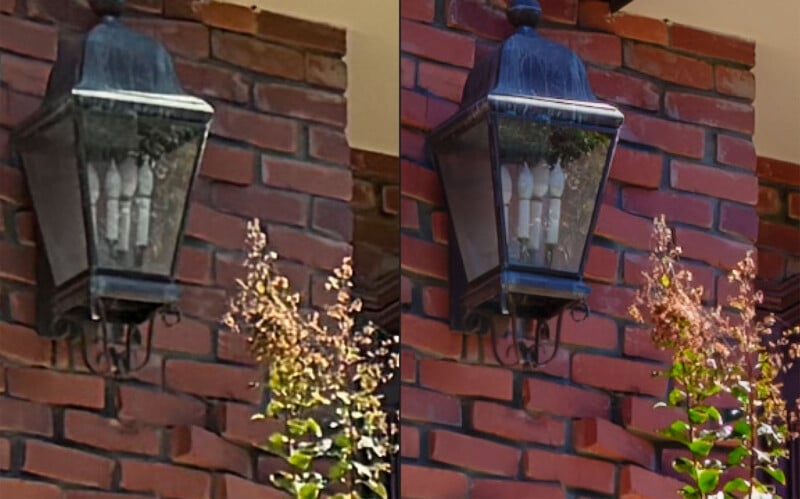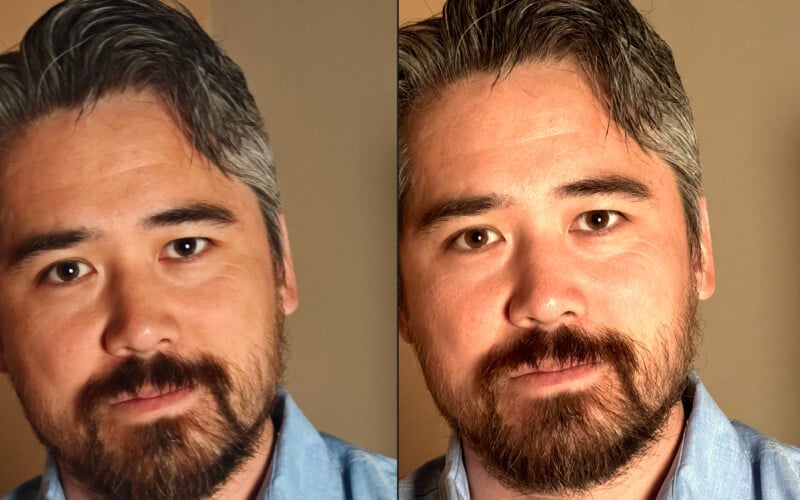![]()
Software company Glass Imaging develops incredible technology that dramatically improves image quality, especially when dealing with small image sensors and lenses like those featured in smartphones. At this week’s Qualcomm Snapdragon Summit in Hawaii, Glass Imaging demonstrated in real-time what its GlassAI tech can achieve, and the results are remarkable.
“Today’s demonstration showcased our ability to leverage the Snapdragon 8 Elite mobile platform to capture a burst of RAW images from an Android camera and process it using a custom trained neural network specific to that camera, and to extract the maximum possible detail,” says Tom Bishop, Ph.D., Founder and CTO, Glass Imaging.
“The end result was incredibly detailed image quality that wasn’t available before — with no hallucinatory effects often associated with generative neural networks and on-device upsampling.”
During Glass Imaging’s demo, it pitted a standard iPhone 16 Pro Max against a smartphone reference device from Qualcomm. The reference device, running GlassAI on a Qualcomm Snapdragon 8 Elite Mobile Platform, powers GlassAI’s Neural Image Signal Processing (ISP) platform. The resulting image quality improvements are immediately apparent.
 iPhone 16 Pro Max (left) versus GlassAI-enabled image (right)
iPhone 16 Pro Max (left) versus GlassAI-enabled image (right)These image quality improvements are similar to those PetaPixel has seen before, including in person at Glass Imaging’s headquarters.
 A 100% crop of a photo captured of PetaPixel’s Chris Niccolls, taken on a smartphone. The original (left) versus the Glass Imaging processed photo (right).
A 100% crop of a photo captured of PetaPixel’s Chris Niccolls, taken on a smartphone. The original (left) versus the Glass Imaging processed photo (right).What makes the latest demonstration different and arguably more impressive is that it was done live on stage using a reference smartphone device that is essentially identical to what consumers will be able to purchase.
“Snapdragon 8 Elite opens new possibilities for AI on mobile devices,” says Ziv Attar, Founder and CEO of Glass Imaging. “With this new generation, we can run much larger and more sophisticated neural networks instantly allowing GlassAI to create a new paradigm for what smartphone cameras can accomplish in terms of clarity, resolution, and definition.”
The GlassAI processing can be performed on devices using the Snapdragon 8 Elite mobile platform. It works alongside the latest Qualcomm Spectra ISP and the improved Hexagon RAW image Direct Link. The GlassAI-processed photo outputs as a complete RGB image with all noise reduction, sharpening, and image quality improvement operations performed. The GlassAI Neutral ISP addresses lens aberrations and sensor-level effects, like crosstalk.
![]()
Glass Imaging recently announced a $9.3 million extended seed funding round led by Google Ventures (GV), and it is working diligently on improving its technology and expanding its real-world applications.
Given that smartphone makers don’t want to necessarily increase the size of their camera modules too much, as that would undercut the practicality of a smartphone, computational photography will be a significant driver of smartphone image quality improvements.
While the latest development concerns the Qualcomm Snapdragon platform, GlassAI is not limited to that specific smartphone platform or to smartphones at all. While the impacts of GlassAI are perhaps most acutely felt when dealing with devices with small image sensors, the technology can be deployed on any camera system, no matter how small or large.
Image credits: Glass Imaging





 English (US) ·
English (US) ·